

Designation:M-9 Inca Armored Infantry Fighting VehicleM-9 Inca Armored Command Carrier |

| 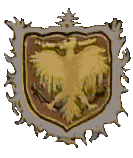
|
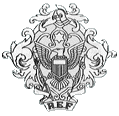
|
||

|
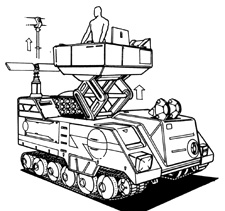
|
||||


| AIFV | ACC | |
|---|---|---|
| Length: | 6.2 | 6.2 meters |
| Width: | 2.9 | 2.9 meters |
| Height: | 2.3 | 2.2 meters |
| Tower raised: | - | 3.6 meters |
| Weight: | 16.5 | 17.2 metric tons. |
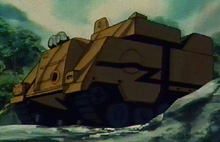

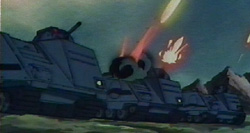
The armor of the Inca armored carriers is composed of a standard Chobam laminar developed in the late 20th century and improved with the materials science advances made during the Robotech era. This armor was mainly designed to defeat projectiles and other kinetic weapons. The armor stops all small arms, and heavy infantry weapons fire, provides good resistance to light mecha-mounted weaponry, and provides fair resistance to medium mecha-mounted weaponry, such as the Valkyrie's 55mm APFSDS round. Armor is slightly better than the FIAT 6836/6846 Heavy Armored Vehicles.
The Inca provides full protection from nuclear, biological, and chemical hazards, using an overpressure crew compartment environment activated by radiation and hazardous chemical sensors, or manually when biological warfare conditions are anticipated. The internal consumables supplies can provide atmosphere for one week maximum.
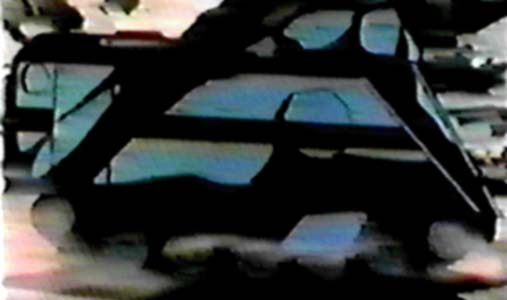
The M-9 Inca AIFV was developed as a prototype series to explore advanced technology from the downed ASS-1 space fortress and to replace the aging IFVs of the day. This vehicle design was a precursor to the destroid series development program and helped paved the way for the introduction of these armored giants. This vehicle tested out experimental miniature fusion reactors and energy weapons before they were upscaled for the destroids. The first few years saw the accidental destruction of a number of these vehicles as the technology behind the power and weapons systems was not fully understood. This delayed the formal adoption by the UNDF forces until the vehicle could prove its reliability to the UN Army command.
The Inca AIFV was developed by the UNDF command to provide protection to their occupation troops and civil defense units. This armored vehicle can traverse rough terrain and is amphibious, so long as the water is not too rough to capsize the carrier. This AIFV primarily saw use in maintaining the strenuous peace and fighting ground troops. The armor on the AIFV makes it highly vulnerable to attack from ground- and air-based mecha, but the EU-1 80mm pulse laser earns it some respect on the field.
Near the end of 2012, the Southern Cross command decided to increase the capabilities of their arsenal without arousing the interest of the RDF high command which kept a watchful eye on any protoculture development. They believed this would decrease their reliance upon the UEG government they no longer fully trusted. As such, the Southern Cross acquired a number of conventional military vehicles that did not rely heavily on the tightly monitored technological advances that came from the SDF-1, Robotech Factory Satellite and Zentraedi armada. Among the vehicles added to their arsenal was the popular M-9 Inca APC. These vehicles were significantly cheaper than any veritechs allowing the Southern Cross to field a significant army. This army led the Southern Cross to be the dominant power when the REF departed for Tirol as non-aligned communities could not mount sufficient resistance to maintain their independence. Despite early problems with the design, these vehicles performed their roles sufficiently in later years for the REF to adopt them into their ranks for infantry support, albeit with an upgraded protoculture cell engine.
The Southern Cross developed a command variant of the popular Inca AIFV to provide a forward command post near the battlefield. The turret was removed and replaced with sensors and communications equipment. The passenger compartment is modified to contain a command compartment for controlling joint forces during battle. The command compartment is open air to provide all-angle visual access and capable of being raised to provide the command personnel with a better vantage of the battlefield without giving away the position of the carrier. This was useful during surprise raids, when the surveillance systems had to be in passive modes to prevent detection by opposing forces, so the command crew could coordinate units via low-probability-of-intercept communications systems. Because of this, the command personnel were wary to approach an active battlefield and tried to stay a reasonable distance away. This vulnerability of the command cab quickly relegated this vehicle to base and facility defense command roles, such as control of surface to air and surface to orbital missile defenses. Behind the command compartment, a sensor suite has been added that required that the rear end of the Inca be raised to allow full sensitivity of the sensor array.
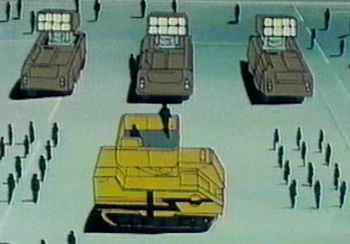
The Inca ACC was frequently fielded as a semi-permanent mobile command post during alert status since it would be harder to destroy than a fixed command post in a building and more readily applicable to the REF's mobile tactics. In addition to field troops, these command posts would direct the close air support aircraft and control the surface to air and surface to orbit defense missile batteries found in the major Southern Cross and REF installations.
Most of these vehicles were destroyed during the REF campaigns against the Invid Regent's forces and in the numerous counter-attacks of the Robotech Masters' forces during the Second Robotech War.
Return to RDF Vehicles Index
Go to Robotech Reference Guide Home Page.
Robotech (R) is the property of Harmony Gold. This document is in no way intended to infringe upon their rights.
Design and HTML by Robert MorgensternCopyright © 1997 Robert Morgenstern, Peter Walker, Pieter Thomassen
Last Updated: Sunday, December 14, 1997 5:34 AM